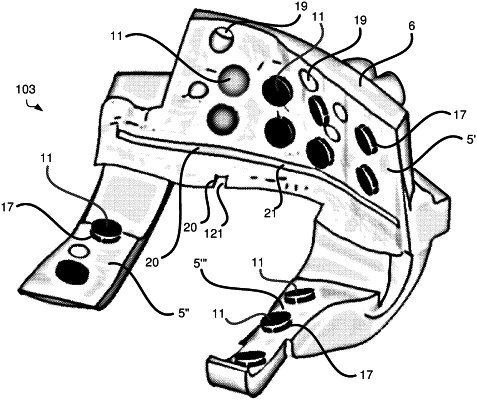| CPC A61B 17/1764 (2013.01) [A61B 17/155 (2013.01); A61B 17/157 (2013.01); A61B 17/158 (2013.01); A61B 2017/568 (2013.01); A61B 2562/0247 (2013.01); A61B 2562/0257 (2013.01)] | 17 Claims |

|
1. A positioning guide system for guiding a surgical bone preparation tool comprising:
a positioning guide comprising:
a patient specific interface having a contoured surface that corresponds to, and to uniquely face, a plurality of patient specific anatomic landmarks of a patient;
a plurality of sensors exposed at the contoured surface to provide an output indicative of proximity or pressure between the patient specific interface and one or more of the plurality of patient specific anatomic landmarks; and
a tool guide, to receive a surgical tool, positioned relative to the patient specific interface;
a processing device configured to:
determine, based on the output of the plurality of sensors, whether the positioning guide is in a correct and unique position relative to the patient specific anatomic landmarks; and
if the positioning guide is in an incorrect position relative to the patient specific anatomic landmarks, determine relative movement required to move the positioning guide to the correct and unique position; and
a user interface to provide a user output indicative of: (i) correct and unique positioning of the positioning guide relative to the patient specific anatomic landmarks; and (ii) if in the incorrect position, the relative movement required to move the positioning guide to the correct and unique position.
|